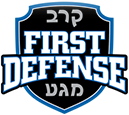As mankind developed over the millennia we had no need for gyms. Our superfit ancestors got more than their daily exercise fix chasing down deer, swimming rivers and hunting for nuts and berries in the forests. This is the sort of lifestyle our bodies evolved for and from. However, these days you're more likely to be keeping fit with aerobics, a team sport or weightlifting. What's important is that you get enough exercise to address all-over body fitness that keeps your muscles toned and working, combating the sedentary lifestyle of the modern world. What's missing is functional intense training for life.
What is FIT?
You may have seen have heard the term 'functional intense training' or 'intense functional training' or even 'functional intensity training' thrown around your gym or on TV, but what actually is it? In a nutshell it means any type of exercise aimed at training the body for activities that you do every day - lifting, stretching and moving around. It means giving your body the power and ability to live life to the full.
Why is it important?
You may be at the gym three times a week, but this doesn't mean that all the parts of your body are getting equal amounts of attention.The fastest person in the spinning class isn't getting the best workout for their arms and aerobic class fans often don't do many weight resistance exercises, for example. Functional training helps restore balance to your exercise. If done correctly, it will lead to improved joint stability and more efficient movement patterns. This means that you are decreasing the chances of injuring yourself while doing your favorite sports, as functional intense training emphasizes your ability to move in six degrees of freedom.
Where did it come from?
Most functional training exercises have their origins in rehabilitation, with many of them used by physical therapists to help retrain patients with movement problems or after a stroke. Task specific practices were designed to meet the needs of individuals, giving them functional independence and allow them to do regular activities or sports. Athletes found that many of these functional intense training exercises help them perform better and FIT has caught on among sportsmen and women the world over, as well as amateur athletes and people who simply want to make the best out of their fitness sessions.
What sort of exercises do you do?
There are many different types of exercises incorporated into FIT, and which you will concentrate on depends on your needs. However, because exercises are designed to train and develop muscles that make it easier to do everyday activities many of them involve weight resistance, such as lifting kettlebells or moving with dumbbells, for example. Many of the exercises use training balls too, as the unstable surface means you have to use deep core muscles to maintain balance. Resistance machines are rarely used for functional intense training because their patterns are fixed and unnatural. They also tend to only focus on one muscle group at a time rather than engaging the stabilizers and peripheral muscles.
How can FIT improve performance?
If designed properly, a functional intense training program will increase your muscular endurance and sport specific strength, while increasing not only your flexibility but also your agility. With functional training you are doing exercises that involve multi joint movements of the body and core and making your body work as a whole rather than in separate muscle groups. This is how the body was designed to function.
What other benefits are there?
You can develop better awareness of your body and greater control over it. You also improve both your balance and posture so it is less likely that you will strain or injure yourself in the future. In addition, functionally trained muscles make for a great foundation if you are looking to do some more traditional strength training or want to build up other muscles in your body.
How often should I do this type of training?
If you are an athlete looking to improve your performance, regular functional intense training is essential, especially if your sport is seasonal and you want to keep your strength up. For most people the combination of cardio and strength training is a great workout to do regularly and working with a trainer can really help personalize the training experience.
Can functional intense training help me lose weight?
While functional training is not aimed specifically at weight loss, the cardio aspects help burn off calories. While functional training is less high-energy and based around movement and flexibility, FIT ups the ante with a more exhilarating, pumping workout with an increased intensity. Here you are using the same everyday movements as you would in functional training but add heavier weights, more reps and work at a faster pace to really kick things up a gear.
Whatever type of sport you are into or however you choose to keep fit, be it soccer in the park, a daily run or a spinning session in the gym, you will enjoy more rounded health if you incorporate some functional intense training into your exercise plan to tone and strengthen, as well as burn calories and be as flexible as possible.



Leave a comment!
You must be logged in to post a comment.